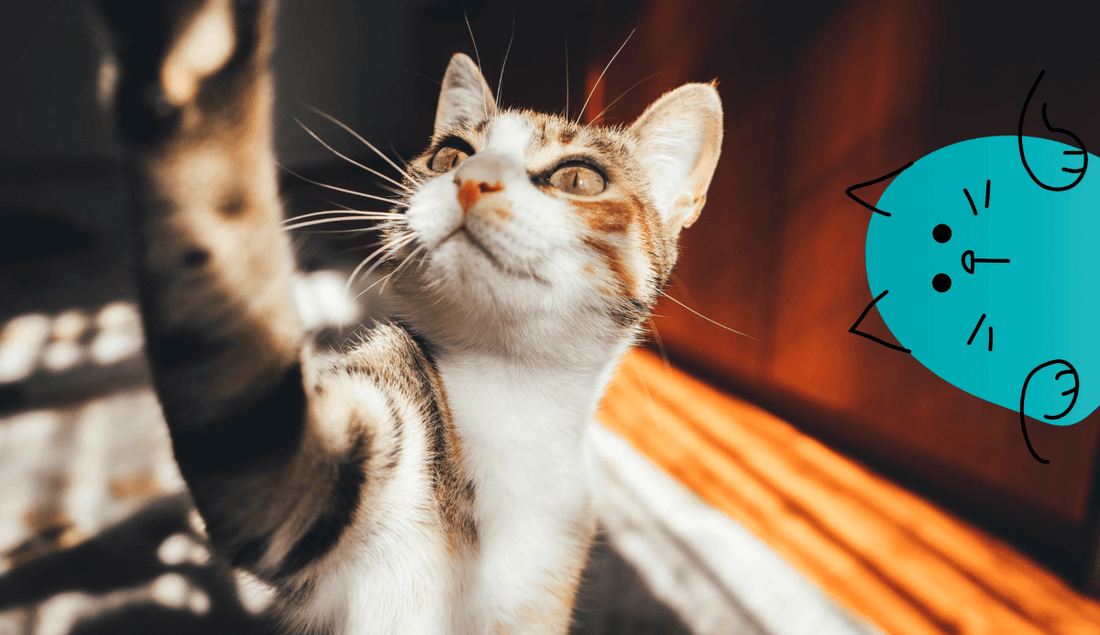Sharing our homes with our cats, it’s impossible not to notice just how alert they are to what goes on around them - whether that’s hearing noises our human ears can’t even pick up, or noticing even the slightest little change to their food. We’ve taken a closer look at cats and their senses to find out more about how our cats see, hear, smell, feel and taste the world around them!
SIGHT
We know that cats see differently to us humans. Their sight has less focus on colours, and instead gives them much better peripheral vision and night vision - perfect for hunting their prey in the low light of dawn and dusk! We even have a blog post that goes into more detail on how cats see!
HEARING
There are some similarities between cat and human hearing when it comes to lower frequency sounds, but cats’ ears allow them to pick up much higher frequency sounds than humans could possibly hear. Cats’ ability to hear higher frequency sounds also reduces as they get older. Unlike humans, however, a cat’s ear contains muscles that allow them to move towards sound - so you might actually notice your cat’s ears moving towards the source of a sound in your home!
SMELL
Cats have a particularly impressive sense of smell, which they rely on to understand the world around them - and also to communicate. Our cats have more odour-sensitive cells than humans, so their sense of smell is many times stronger than ours.
And it’s not just their nose that’s used to pick up scents! They have an extra sensory organ, the Jacobson’s organ, or vomeronasal organ, which is in the roof of their mouth and allows their tongue to pass on scents to their brain. That weird face your cat makes after sniffing something? That’s them analysing the smells they’ve just picked up via this extra special sense!
TOUCH
A cat’s whiskers are the key to their sense of touch. Typically cats have 24 whiskers around the nose, plus a few extra whiskers above their eyes, under their chin, on their cheeks, and on their wrists. These are all highly sensitive and can detect even the slightest of movement, and they help with navigation - when moving around in the dark, our cats use their whiskers to know where to walk!
TASTE
Our cats’ sense of taste reduces as they age, so while kittens are born with a good sense of taste, this slowly disappears over time. This can explain why adult cats can be extra particular about what’s on their dinner plate! Cats have taste buds on the sides, tip and base of their tongue, but none of these taste buds are sensitive to sweet-tasting foods. According to scientists, this might explain why cats prefer a high-protein carnivorous diet instead of plants. Plants appeal to lots of animals (and humans!) thanks to their sugar content, but because cats can’t pick up on this, they’ve stuck with the protein-rich diet their taste receptors can enjoy.
DO CATS HAVE A SIXTH SENSE?
Chances are you’ve heard talk of cats having a sixth sense, or some kind of extra-sensory perception. It’s most likely, however, that this idea arose thanks to cats having senses that are so much better than ours! As they can pick up on sounds and smells we don’t notice, it might seem like they’ve got extra-special powers.
Cats can also pick up on signs that tell them other animals are in the area, to which we’d be totally oblivious, so all of these can result in cats reacting to (seemingly) nothing. In reality though, they might just be a bit smarter than we are!

